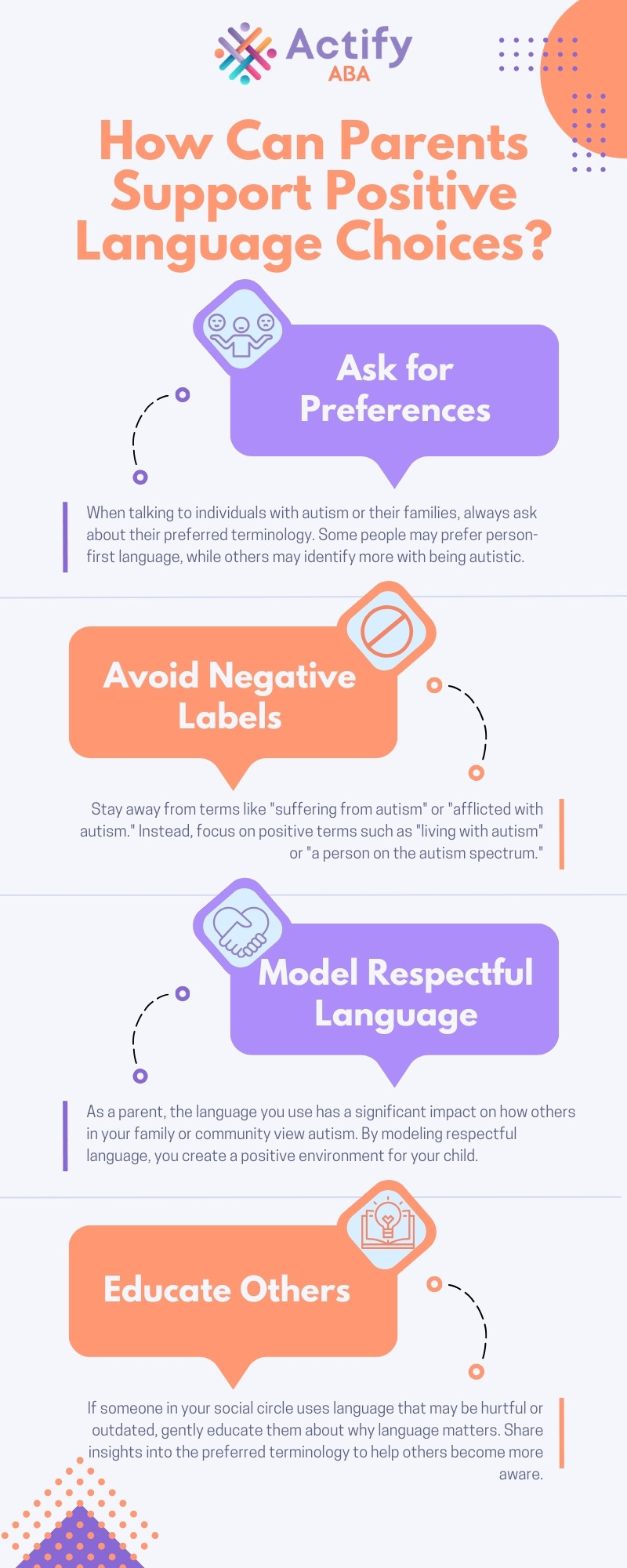
Key Points:
- The terminology around autism is evolving to reflect respect and empowerment for those on the spectrum.
- Person-first and identity-first language are the two main approaches used, each with its own significance.
- Understanding the impact of language around autism can help parents and communities foster inclusivity and understanding.
Autism is more than a diagnosis—it’s about understanding and embracing differences. The way we talk about autism influences how we interact with and support those affected by it. As awareness grows, so does the language we use, which plays a vital role in fostering respect and inclusivity.
What is the Preferred Language Around Autism?
The language around autism has become a subject of ongoing conversation and, in some cases, debate. The key is understanding that language preferences can vary between individuals and communities. Some people on the autism spectrum prefer person-first language, while others identify with identity-first language. Here’s a breakdown of the two primary approaches:
- Person-First Language: This language approach puts the individual before the condition, emphasizing that autism is just one part of who they are. For example, “a child with autism” instead of “an autistic child.” Person-first language aims to show that the person is more than their diagnosis.
- Identity-First Language: Some individuals on the autism spectrum prefer identity-first language, as it acknowledges autism as an intrinsic part of their identity. For example, “an autistic individual” instead of “a person with autism.” This terminology aims to affirm that autism is a natural and essential part of who they are.
Both approaches are widely accepted, and it’s important to ask individuals or their families which terminology they prefer to use. Respecting these preferences plays a significant role in fostering understanding and creating a more inclusive environment.
Why Does Terminology Around Autism Matter?
The language we use around autism significantly impacts how society views and treats individuals on the spectrum. By using respectful and empowering terms, we can promote dignity, reduce stigma, and foster a more inclusive environment for everyone.
The words we choose to describe autism can shape societal attitudes. Terms that focus on strengths rather than deficits help create a more positive, balanced understanding of what it means to live with autism. This can influence both public perceptions and treatment approaches.
Using the right terminology also supports individuals with autism and their families. Language that respects their preferences shows understanding and promotes a sense of pride and belonging. Positive language can also encourage self-confidence, which is essential for personal growth.

What Are Some Common Terms in the Language Around Autism?
The language around autism can include a variety of terms that may have different meanings. Some terms are embraced by advocacy groups, while others may be outdated or potentially offensive. Understanding which terms to use and when can help avoid unintentional harm. Below are some commonly used terms:
- Autism Spectrum Disorder (ASD): This is the formal diagnostic term used in the medical community to describe the range of conditions that fall under the autism umbrella. It encompasses a wide spectrum of symptoms, challenges, and strengths.
- Neurodiversity: This term refers to the concept that neurological differences, including autism, are part of human diversity. Neurodiversity advocates for the acceptance of these differences as natural variations rather than disorders.
- High-functioning / Low-functioning: These terms are often used to describe an individual’s cognitive abilities and daily living skills. However, they are increasingly criticized for oversimplifying the experiences of individuals with autism and for being limiting labels.
- Person with Autism: This person-first language puts emphasis on the individual before the condition. It’s considered respectful by many, but it’s always best to ask individuals or their families about their preferred terminology.
- Autistic: Many individuals on the spectrum prefer this identity-first language, which acknowledges autism as an integral part of their identity. It’s important to note that preferences can vary, so it’s always respectful to ask.
- Neurotypical: This term refers to individuals whose brain development and functioning are considered typical or standard. It’s often used to describe people who do not have autism or other neurological differences.
As a parent of a child with autism, it’s essential to model and encourage the use of positive, empowering language around autism. Here are a few tips to promote respectful language use:

Support Your Child’s Growth with Actify
Language is just one piece of the puzzle when it comes to supporting your child’s development. If you’re looking for effective ABA therapy services, Actify is here to help. We understand the significance of using the right language around autism and offer personalized therapy to promote your child’s strengths.
We are proud to serve families in Maryland and the surrounding areas, helping children develop essential skills and gain confidence in their abilities. Contact Actify today to learn more about how our services can support your child’s growth!
